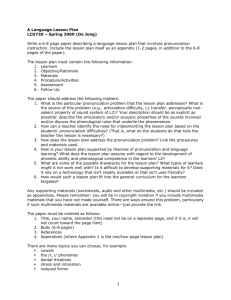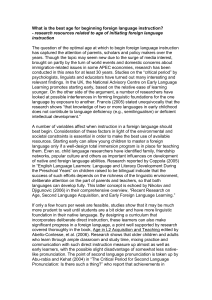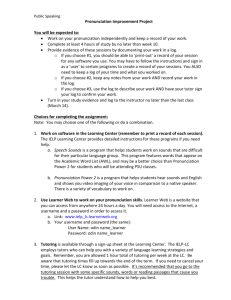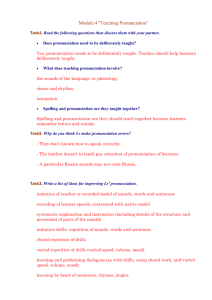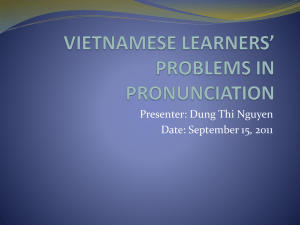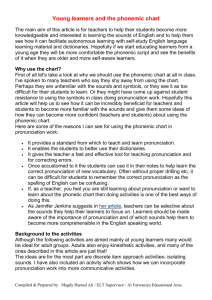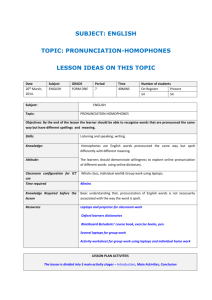Teaching English Pronunciation: Principles & Techniques
advertisement
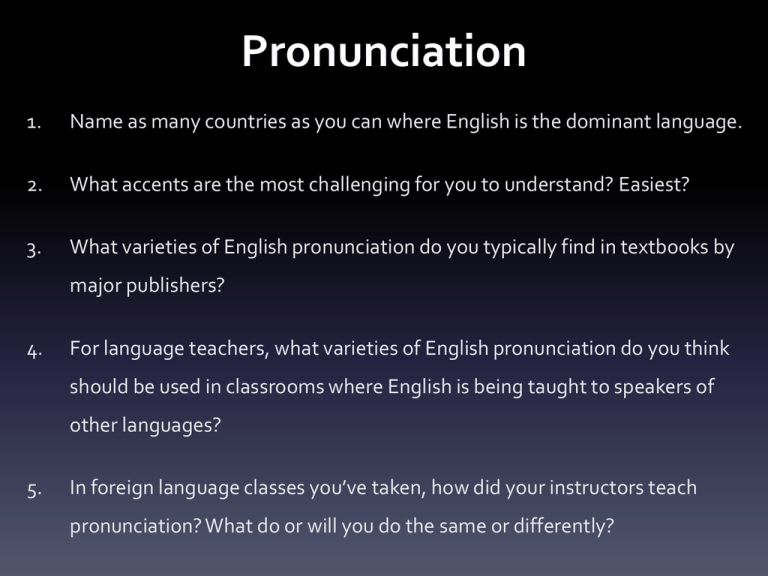
Pronunciation 1. Name as many countries as you can where English is the dominant language. 2. What accents are the most challenging for you to understand? Easiest? 3. What varieties of English pronunciation do you typically find in textbooks by major publishers? 4. For language teachers, what varieties of English pronunciation do you think should be used in classrooms where English is being taught to speakers of other languages? 5. In foreign language classes you’ve taken, how did your instructors teach pronunciation? What do or will you do the same or differently? Principles for teaching pronunciation 1. Foster intelligibility during spontaneous speech (lessons should engage learners in using sounds in more personalized ways and through more spontaneous ways of speaking) 2. Keep affective considerations in mind (provide support when helping learners modify their ways of pronouncing English) 3. Avoid the teaching of individual sounds in isolation (practice sounds within the contexts of whole phrases, short sentences, and interactive classroom tasks; do activities that provide opportunities for learners to communicate meaningfully) Principles for teaching pronunciation 4. Provide feedback on learner progress (teachers need to support learners’ efforts, guide them, and provide cues for improvement; help them know where to place their energies) 5. Realize that ultimately it is the learner who is in control of changes in pronunciation (i.e. teachers can only act as language coaches who supply information, give models from time to time, set standards, provide a variety of practice opportunities, and support and encourage learners) Classroom techniques and tasks Openness to change (spend time building learners’ selfconfidence and attending to their emotional needs) Minimal pairs (distinguish between specifically targeted sounds, stress patterns, or intonation patterns, preferably in context) Gadgets and props (rubber bands and balls that bounce easily can be used to call attention to word stress, sentence stress, rhythm patterns, and features of intonation) Classroom techniques and tasks Slow motion speaking (teachers can try being slow, deliberate, and exaggerated while maintaining accurate sound articulation, rhythm, intonation, and pausing patterns > permits learners to view close up, and to imitate, the teacher’s way of producing specific sounds in context) Techniques from drama and theater arts ( structure instruction in ways similar to how an actor might work during rehearsal for a performance > teachers can provide tips on body language, tempo of speech, pitch range, etc.)
